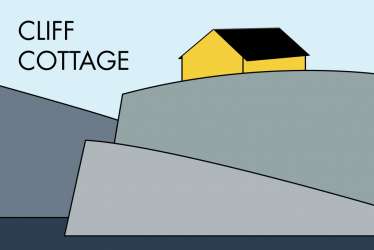
As this weblog post is being published, my son, Alasdair, and I are in Estonia, visiting Tallinn, as well as the islands of Hiiumaa and Saaremaa. We have plans to visit Latvia and Lithuania is 2026. This weblog post is to provide context to the political situation these countries face.
Estonia, Latvia and Lithuania are small Baltic states with an area of 45 335, 64 589 and 65 300 km2 and populations of 1 331 824 (2021 census), 1 842 226 (2022 census) and 2 897 430 (2025 estimate) people, respectively. They been inhabited since at least 9 000 BC, 3 000 BC and 8 000 BC, respectively. These countries became part of the Soviet Union in 1944, but regained their independence 1991-08-20, 1991-08-21 and 1990-03-11, respectively. They do not want to be affiliated politically with Russia again.
The three countries have armed themselves and became members of the North Atlantic Treaty Organization (NATO) on the same day, 2004-03-29, along with Bulgaria, Slovakia and Slovenia. Currently, continued participation or the dependability of USA in the alliance has been questioned. NATO has changed since the 2022 invasion of Ukraine. Finland and Sweden have joined, and Poland has increased its influence. Russian President Vladimir Putin (1952 – ) is unhappy with the participation of the Baltic states in NATO, referring to it as a serious provocation for Russia. His feelings for these three countries are similar to those he has for other former Soviet states suck as Georgia and Ukraine. They should submit to the will of Russia.
Because of Donald Trump’s vascilations about NATO, Europeans are starting to understand that nobody outside of Europe is prepared to resolve Europe’s challenges with Russia. The Baltic States, in particular, have to defend themselves, being adjacent to Russia and/ or Belarus.
Between 2001-09-12 and 2001-10-02 in response to 9/11 attacks in the United States, NATO’s collective self-defense provisions were undertaken at NATO’s own initiative, without a request by the United States, and occurred despite the hesitation of Germany, Belgium, Norway and the Netherlands. The United States accepted contributions on a bilateral, non-NATO basis from 14 of NATO’s then 19 member states as well as non-NATO members Russia, Latvia, Estonia and Slovakia. These ranged in size from Estonia’s contribution of a five-man explosives detection team, to the UK’s commitment of an infantry brigade and naval task force. It is the only time in NATO’s history its collective defense provisions have been invoked.
The Baltic States have legitimate concerns, particularly about the state-directed destruction of other places, supervised by Joseph Stalin in the 1930s. Historian Robert Conquest (1917 – 2015) wrote an account of this in The Great Terror: Stalin’s Purges of the 1930s (1968). It was revised as The Great Terror: A Reassessment (1990) and The Great Terror: 40th Anniversary Edition (2008). A more appropriate book for people living in the 21st century written with Jon Manchip White (1924 – 2013), is the fictional book What to Do When the Russians Come: a Survivor’s Guide (1984) which was intended to be a real survival manual in case of Soviet invasion.
These Baltic republics have supported Ukraine vigorously since the 2022 Russian invasion, they have supported citizen preparedness, encouraging citizens to stock enough food in their home to weather an emergency, and to have plans for family rendezvous outside the capitals. There is also a need for a mental preparation for a Russian invasion.
Many military analysts have assured European nations that the era of war in Europe had passed, and that their concerns no longer applied. Thus many Europeans assumed that a full-scale brutal war, like what occurred during the Second World War, was possible. With the Russian invasion of Georgia in 2008, followed by the invasion and annexing of Crimea in 2014, and then other parts of Ukraine in 2022, Europeans are slowly realizing their error. This has resulted in increased military spending, and in the stationing of NATO forces in other Baltic countries.
Europeans seem to be understanding the Russian threat, almost as fast as the American administration is repeating Kremlin propaganda. Because of the current American attitudes, NATO may devolve into a European defense alliance. There may be a need for something larger, a democratic alliance with other members such as: Australia, Canada, Japan, New Zealand, South Korea and Taiwan. It should be noted that American troops have been in all three Baltic countries since the annexation of Crimea. There used to be about 120 000 Russian troops along the Estonian-Russian border. These are not there now, possibly because they were sent to Ukraine. On the other hand Putin declared that Narva, Estonia’s third-largest city, is historically part of Russia. It is closer to St. Petersburg than to Tallinn. Of its roughly 56 000 inhabitants, 96 percent speak Russian and a third hold a Russian passports. Indeed, about a quarter of Estonia’s population is ethnic Russian.
While the Russian military was able to seize territory in Georgia and Crimea, it has not had much success in this second invasion of Ukraine. One person suggested that Russia has gone from being the second-strongest army in the world, to being the second strongest in Ukraine. In the Baltic states, there have always been nebulous plans to mobilize their populations. These were never activated until the second Russian invasion of Ukraine. Ukraine was supposed to accept defeat in a couple of days/ weeks/ possibly months. However, the Ukrainian people rose up. This influenced Baltic strategy. Every adult citizen knows what to do in time of war. Often they bring their civilian capabilities for a potential war effort.
Here is a list of countries bordering Russia, from longest to shortest, with their border length in km: Kazakhstan = 7 512.8; China = 4 209.3; Mongolia = 3 485; Ukraine = 1 925.8; Finland = 1 272.8; Belarus = 1 239; Georgia = 875.5; Azerbaijan = 372.6; Estonia = 294; Latvia = 270.5; Lithuania = 266; Abkhazia = 255.4; Poland = 204.1; Norway = 195.7.
Today, troops and personnel from NATO Allies serve, train and exercise together in the east of the Alliance, representing a strong expression of unity and solidarity. Forces from contributing nations rotate in and out of the battlegroups; at any given time, they may be deployed to the battlegroups or stationed in their home countries with the ability to deploy rapidly, if needed.NATO is also integrating Finland and Sweden, in part by developing a presence in Finland, which has the longest border with Russia.
The Russian/ Belarus border with Europe is with NATO members, from north to south: Norway, Finland, Estonia, Latvia, Lithuania and Poland. This means that Russian plans to reincorporate the Baltic states into Russia has become increasingly complicated. An attack on any of these Baltic states, will be met with a response from Poland, Finland and others.
At the 2016 NATO Summit in Warsaw, there was agreement to establish a eight Forward Land Forces (FLF) multinational battlegroups, provided by framework nations and other contributing Allies on a voluntary, fully sustainable and rotational basis. The battlegroups operate in concert with national home defence forces and are present at all times in the host countries. All eight battlegroups are fully combat-capable formations. While NATO forward presence in both the northeast and southeast of the Alliance, the emphasis here is on the northeast.
This forward presence was first deployed in 2017, with the creation of four multinational battalion-size battlegroups in Estonia, Latvia, Lithuania and Poland, led by the United Kingdom, Canada, Germany and the United States, respectively. In the southeast, there was increased NATO activity. However, it was only after the Russian invasion of Ukraine in 2022-02, that NATA reinforced its existing battlegroups and established four more in Bulgaria, Hungary, Romania and Slovakia. At the 2022 Madrid Summit, NATO agreed to scale up beyond the battalion-size multinational battlegroups to brigade-size units, if needed. In 2024-07, Latvia scaled up to forming NATO Multinational Brigade Latvia. In 2024-10, the existing multinational battlegroup was transferred to this brigade. The battlegroups are not identical; their sizes and compositions are tailored to specific geographic factors and threats. Overall, military requirements guide each battlegroup’s composition.
As of February 2025, there were eight battlegroups on the eastern front. Those in the three Baltic states had the following participants: Host nation: Estonia; Framework nation: United Kingdom; Contributing nation: France. Host nation: Latvia; Framework nation: Canada; Contributing nations: Albania, Czechia, Iceland, Italy, Montenegro, North Macedonia, Poland, Slovakia, Slovenia, Spain and Sweden. Host nation: Lithuania; Framework nation: Germany; Contributing nations: Belgium, Czechia, Luxembourg, the Netherlands and Norway.
Trumpism seems to focus on making America great again, or at least reconstructing America so that it looks as if it had not left the 1950s, possibly due to Donald Trump’s (1946 – ) age. I keep wondering when GM will resurrect 1957 Chevrolet Bel-Aires? The building of alliances is the antithesis of Trumpism, so the world is isolating USA. Russia may have had large-scale plans for the future of the world after subduing Ukraine, but its military campaign has proved so underwhelming, that it is resorting to hybrid warfare, including: sabotage, espionage and information operations. People have to be prepared for this.
To end on a more positive note. I am an eager reader of the annual Happiness reports. Lithuania ranked highest for people under the age of 30 in 2024. Latvia and Estonia are ranked 31st and 44th for their under-30 populations. More generally, Lithuania was ranked 19 for all age groups, ahead of Estonia in 34th place and Latvia in 46th. Unlike its neighbours, Lithuania has been steadily climbing up the happiness rankings since 2017, when it placed 52nd.










